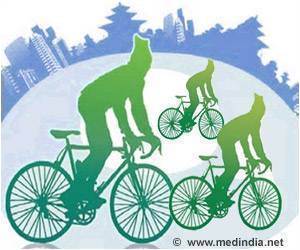At a low exercise intensity of 50 Watts, a recreational cyclist trying to pedal like a professional at 110 revolutions per minute will use more than 60% of power.

The researchers found that this was less effective for recreational cyclists. Formenti said, "We used mathematical models to show the degree to which energy required to spin the legs increases with cadence."
The study said, "At a low exercise intensity of 50 Watts, a recreational cyclist trying to pedal like a professional at 110 revolutions per minute will use more than 60% of their power just to spin their legs. Only 40% is going into overcoming the cycling resistance. To translate that to cycling on the road - only 40% of the energy you burn would be going into moving the bike forward."
The findings appeared in Physiological Reports.
Source-IANS









